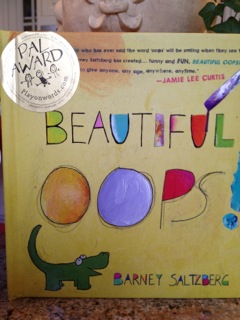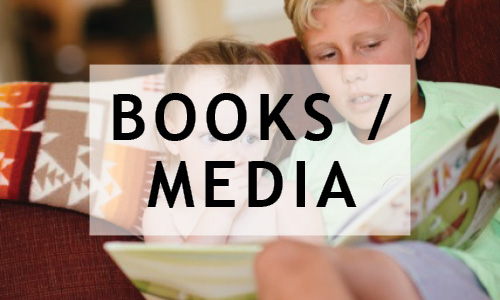 I love to use outstanding picture books in therapy. Kids learn to love books, identify the elements of a great story and practice many critical thinking or articulation skills. Here are some of my favorite new books that kids enjoy:
I love to use outstanding picture books in therapy. Kids learn to love books, identify the elements of a great story and practice many critical thinking or articulation skills. Here are some of my favorite new books that kids enjoy:
“Splish, Splash, Splat” by Rob Scotton, 3 years and up
Splat was enjoying the perfect dream as candy fish swam by when mom interrupted his sleep, declaring it was time to get up. And oh, by the way, his arch enemy, Spike was coming over for a playdate after school. Splat’s day began to unravel as was ordered to take a bath, was taunted by Spike and learned of impending swimming lessons at school. As the class lined up to jump in the pool, two classmates couldn’t quite get up the nerve to enter–Spike and Splat. Soon their fear of the water united them and friendship was born. This latest addition to the Splat series offers teachers and parents the opportunity to tackle such subjects as bullying, facing your fears, sharing, getting along and building friendships. Each subject is a little language lesson in itself:
- Ask a child to relate their world to Splat’s as he navigates his “not a good day at all!”
- Talk about bullying, facing your fears, or sharing and outline the steps to resolving problems
- Describe the action in Scotton’s incredible illustrations. I find this is a great activity for my kids on the autism spectrum. The most difficult is the illustration of how Splat cleverly lured Spike into the pool.
- Answer inferential questions. “Why is Splat frustrated on the way to school. Why do you say that?”
- Carryover activity for /s/ in describing the pictures or re-telling the story. There are plenty of /s/ blends!
“Sea of Dreams” by Dennis Nolan, 3-7 years (I think it works well with older kids too)
Children and adults alike relate to the opportunity for adventure with a trip to the beach. As a little girl begins to shape the sand under the watchful eye of a seagull, we watch a beautiful castle take shape. With a last look over her shoulder as she leaves the beach at sunset, she sees the tide coming in and start to overtake her handiwork. But wait–isn’t that a light in one of the windows? The beautiful illustrations take over and draw the “reader” into a magnificent nautical adventure as a family of little people take off into the ocean. Tossed out of the boat, a child is faced with an enormous fish, only to be circled by mermaids riding seahorses on the next page. Excellent wordless books have just enough tension and lack of precise storyline to force the reader to chose what direction to take his story. Was the fish dangerous or just a gentle sea creature? Did the mermaids save the boy or merely curiously come upon him? The clan continues their journey to a rock island, setting up camp and communing with the birds. The seagull leads us back across the water to the original beach where our little castle builder has returned to start anew. A great resource for parents and educators,” Sea of Dreams” teaches children to to be observant, scanning the page of a picture book to collect clues for a story. Beginning in kindergarten, kids are asked to take a “picture walk,” telling the story from the pictures before the text is read. “Sea of Dreams” extends that concept by offering the storytelling to the child.
- Tell the story as a group–offer different twists and turns since many of the pictures are vague enough to suggest different paths for the story
- Answer wh-questions that require inference from the pictures–“Why is the light on in the castle?” “What will the fish do?” “What does the seagull do throughout the story?”
- Add your own ending to the story
“Chirchir Is Singing” by Kelly Cunnane and Jude Daly, I’d recommend this for kindergarten and up
This beautiful tale begins, “High in Africa, wind like a cat paw wipes the sky clean,” drawing us in the poetic beat of a day in the life of a Kenyan family. Little Chirchir ‘s helpful attitude gets stifled with each attempt to do a chore with a family member–draw water from a well, build a fire, mud the floor, or gather potatoes. After spilling the water, mismanaging the fire, and dropping the sack of potatoes, she gets sent on to yet another task. Finally frustrated, she finds fulfillment in caring for her baby brother as her contribution to the day’s work allows others to be more productive. While unfolding a tale of a typical day in the life of a rural Kenyan family, the author treats the reader to delicious word pictures to discuss with children–“the winking silver circle of the well,” “Maize leaves clatter like rain,” and “clouds brush afternoon into evening.” The repetition of trying new tasks, being laughed at by the birds, and singing to her next assignment, draw the reader into Chirchir’s story while the folk-art illustrations emphasize the simplicity of life. A great read aloud for elementary school teachers and therapists, “Chirchir Is Singing” provides a lesson in poetry, storytelling or a day in the life of a Kenyan family.
- Read this to begin a unit on poetry
- Practice descriptive language
- Describe the patterns throughout the book– birds, chores gone wrong, etc
- Explain the word pictures
- Discuss literal and figurative language
- Talk about chores that are easy or hard to do, and why?
“Beautiful Oops” by Barney Saltzberg, 3 years through adult!
“Beautiful Oops” serves as a delightful, bright, interactive book for kids, demonstrating through paper art that a spill, tear or smudge can be transformed into a piggy, crocodile’s smile, or a bunny. As preschoolers name the action, “the elephant,” “a fishy,” the text is telling another story of stains, drips and smears that lead to exploring, or finding worth and potential in an “oops.” I applaud children’s authors who use strong vocabulary to push young minds, getting them ready for reading. But let’s go up the growth chart a step and see this book’s relevance for older kids. I can imagine a teacher reading this to a circle of fourth graders and starting the conversation about making mistakes–what slip ups do we make in our school work? How do we use our “mistakes” to revise or go in a different direction? “Beautiful Oops” could launch a writing assignment or a collaborative class discussion looking at “goofs” that kids shared for possible ideas for potential fixes or trying a new direction. This little book can be read on many levels to inspire, teach or just entertain.
- Listen to the story behind this book–it’s fascinating. The author used to visit an artist and leave his “mistakes” behind, only to find them framed when he returned the next time. (CBS radio)
- Describe how the mistake was transformed into something beautiful



